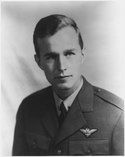| President | Service notes |
|---|
| John Adams | Adams was 41 years old when the Revolutionary War broke out and did not serve in the field. In addition to his diplomatic duties during the war, he served an executive role in managing the distribution of ammunition and other supplies for the Continental Army and coordinating strategic communication among the generals of the various theaters. He is sometimes called the "de facto Secretary of War" during this time. |
| John Quincy Adams | The U.S. did not fight any major wars during the time when Adams was of the usual age for military service (18 to 34) and the peacetime armed forces were very small during this time. It would not have been expected for a member of a prominent, wealthy family to serve unless a war broke out. |
| Martin Van Buren | Van Buren was a member of the New York state senate when the War of 1812 began and was involved in the military justice system and on issues of military administration during the war. |
| Grover Cleveland | Drafted during the Civil War, but paid $150 for a substitute (a legal option under the terms of the Enrollment Act of 1863, and his substitute survived the war) |
| Woodrow Wilson | The U.S. did not fight any major wars during the time when Wilson was of the usual age for military service (18 to 34) and the peacetime armed forces were very small during this time. Wilson was in his mid-40s and working as a professor at Princeton during the Spanish-American War. Moreover, his poor health (he had experienced a minor stroke in 1896), [26] would have disqualified him from any active service. |
| Warren G. Harding | Harding was a 33-year-old member of the Ohio state senate when the Spanish-American War broke out. |
| Calvin Coolidge | Coolidge was 26 years old, practicing as an attorney, and serving as a city council member when the Spanish-American War broke out. |
| Herbert Hoover | Served in a private humanitarian capacity as a civilian in Europe during World War I. He was also involved in the Siege of Tientsin during the Boxer Rebellion as a guide for U.S. Marines. |
| Franklin D. Roosevelt | Attempted to join the Navy during the Spanish–American War but was unable as he contracted measles. Served as Assistant Secretary of the Navy from 1913 and through World War I; when the U.S. entered the war in 1917 he offered his resignation so that he could apply for a commission in the Navy, but was refused by the president. However he did visit the Western Front in 1918. |
| Bill Clinton | Received a 2-A student draft deferment during the Vietnam War, and later registered for the draft. He received a high draft number, was not drafted, and did not serve. |
| Barack Obama | Reached the age of 18 in 1979, six years after the end of the military draft in the U.S. |
| Donald Trump | Attended New York Military Academy for secondary school, graduating in 1964. Received four draft deferments while attending college, then one for medical reasons after he was diagnosed with bone spurs on his heels [27] |
| Joe Biden | While in school, received five student draft deferments and afterward was classified as unavailable for military service due to asthma |























































